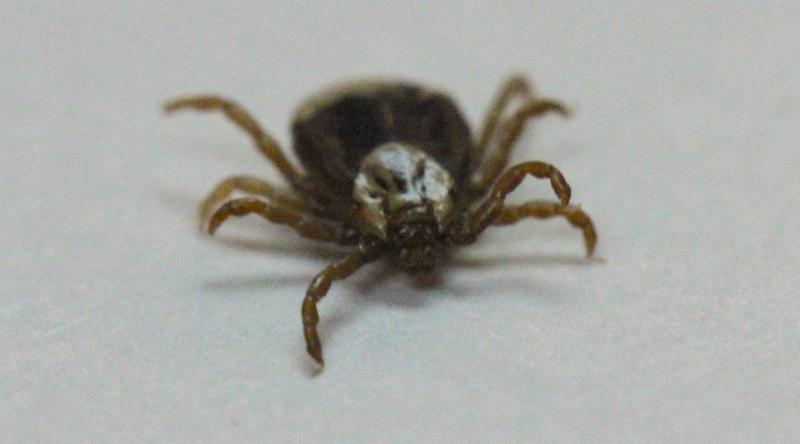There have been several reports of winter ticks showing up on horses in South Dakota. Winter ticks, also called moose ticks, are unlike other tick species because they are active during the winter months. The primary hosts of winter ticks include moose, elk, deer, and other large wild game. However, they can occasionally be found on domesticated animals such as horses and cattle. With the wet conditions that were experienced in 2019, there was likely a high survival rate of winter ticks which has resulted in increased populations across the state.
Profile

Winter ticks are small and will only grow to about ¼ of an inch long. Females may reach up to ¾ of an inch when fully engorged with blood. Adult males are mostly brown in color with a pattern of white and brown markings on their back (Figure 1). Adult females are also brown but have a white scutum (the area behind the head) (Figure 2).
There is one generation of winter ticks per year. The ticks first emerge in late summer and early fall after lying dormant as eggs for most of the growing season. New hatchlings find a suitable host and remain on that animal to feed, mature, and mate during the winter. In the spring, female winter ticks drop to the ground and lay their eggs for the next generation.
Management

Winter ticks are not considered to be a human health concern. However, they can cause issues for infested animals if present in large numbers. Signs of an infestation include anemia, hair loss, lack of appetite, and abdominal swelling. Severe cases can eventually result in death if left untreated.
Brushing, washing, insecticide sprays and pour-on treatments can all be used to remove or treat winter ticks on infested animals. If treating with an insecticide, only use products that are labeled for ticks and be sure to follow the label directions.


